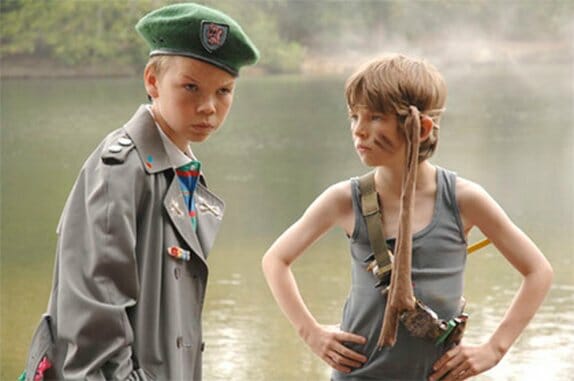Son of Rambow

Release Date: May 2
Director/Writer: Garth Jennings
Cinematographer: Jess Hall
Starring: Bill Milner, Will Poulter
Studio/Run Time: Paramount Vantage, 96 mins.
Lighthearted friendship tale featuring bulky video camera
Son of Rambow, the new film by Garth Jennings, was an audience favorite at Sundance in 2007, and although it was snatched up quickly for distribution, it’s been held from theaters for over a year. I can only guess why: Someone must’ve been afraid to upstage Stallone with a funny little movie that uses his action franchise as a springboard for something far more rewarding. (I know, they’re probably just hoping to ride his new film’s coattails, but I prefer to see it the other way around.)
Two boys attending an English middle school, Will and Lee (played by perfectly cast newcomers Bill Milner and Will Poulter), are brought together by a slight altercation outside the headmaster’s office. Otherwise, they might not have become friends—they’re complete opposites, Lee a Huck Finn-type miscreant who’s no stranger to the principal’s office, and Will part of a family that belongs to a strict Christian denomination known as “The Brethren.”
The boys’ chance meeting in the hallway eventually leads them to Lee’s house, where Will stumbles across a bootleg of First Blood, Stallone’s original Rambo film, the sight of which nearly burns his long-sheltered eyes and stokes his already fertile imagination, giving him fantasies of bombs and bowie knives and missions in the jungle.
-

-

-

-

-

-

-

-

-

-

-

-

-

-

-

-

-

-

-

-

-

-

-

-

-

-

-

-

-

-

-

-

-

-

-

-

-

-

-

-








































